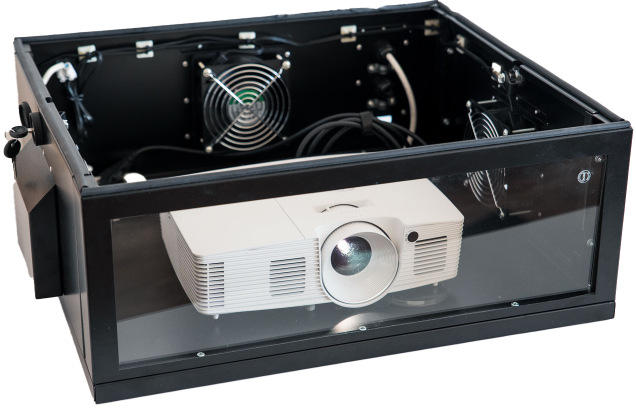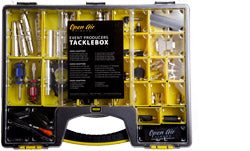Your Guide to Video Cables Part 2: The Less Common

When you're planning an outdoor cinema event - be it a big show at a city park with 1,000 guests, or a modest affair in the backyard - you can count on using a select few types of cables.
By now, you're probably familiar with a couple of different types - HDMI, VGA, USB, etc. More often than not, you'll be running one of these cables from your video source to your projector. But, sometimes there's someone else in charge of providing the video source for your event, and sometimes they show up with something that requires a different type of connection than what you're used to.
Even though this won't happen very often, it's still good to at least acquaint yourself with some of the other kinds of video cables you may encounter as an outdoor projectionist.
S-video cables are sometimes referred to as Y/C cables or SVHS cables. Unlike composite cables, which send all video signals along the same conduit, S-video cables separate the signals and send them down their own specific pathway.
In specific, S-video cables split up and divide their signal into two different components: luminance and chrominance. Luminance defines the brightness of an image. Chrominance, meanwhile, controls color. In specific, the cable that deals with chrominance would navigate between the specific signal sent from the video source and a standard color that possesses the same luminance. Although S-Video cables are less standard, they often display a marked improvement in picture quality over composite cables.
Component Cables
Component cables are the ones split up into three color-coordinated ends - usually red, green, and blue. Just as their name would indicate, also divide their signals into components, just like S-video cables. Many older stereos, some VCRs, and even some higher end equipment today still use component cables. Often these cables provide an excellent picture and great color. However, most projectors - especially the lightweight kinds you'd want to use for an outdoor cinema event - do not have the space for component cable ports. Don't panic, though. If your video source is based around component cables, you can often find a converter. There are even some cables that use both component and VGA connections.
RCA
RCA cables also split up their signals into three different color-coordinated conduits. But unlike your standard component cables, which deal primarily with the video signal, RCA cables handle both video and audio. The yellow end of the RCA cable transmits the entire video signal, while the red and the white ends deal with left-channel and right -channel audio signals. If you've ever dealt with a VCR, you've more than likely used an RCA cable. RCA cables also come in another form, known as BNC. The only difference between the two is that BNC cables lock in place. A lot of professional video equipment utilizes the BNC cable connection, but those cables can be converted back to RCA with a simple adapter.
More often than not, you'll run into the standard HDMI, VGA, and USB connections that we've gone over in previous posts. But, if you keep a few of these less-common cables around, you'll be less likely to run into unexpected technical difficulties at your next outdoor cinema event. Remember, a little bit of preparation goes a long way.





